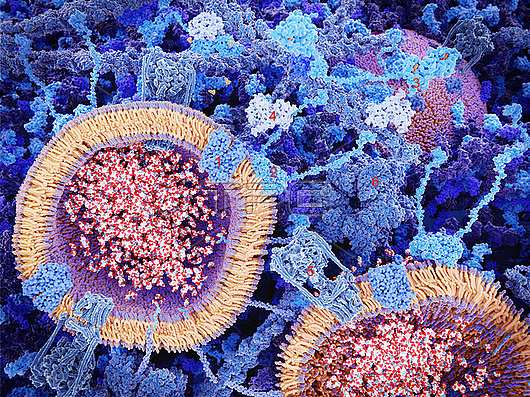
Excitatory synaptic vesicle, illustration. A synapse is a junction between two neurons (nerve cells). An excitatory synapse increases the likelihood of an action potential firing in the postsynaptic cell. The main excitatory neurotransmitter in the central nervous system is glutamate (red, white and blue molecules). Glutamate transporters (1) move the neurotransmitter into synaptic vesicles (round), with the help of ATPase (5). Vesicle movement to the presynaptic membrane (not seen) is regulated by the proteins synapsin (2) and calcium/calmodulin-dependent protein kinase II (CaMKII, 6). Phosphorylation of synapsin by protein kinase A (PKA, 3 and 4) transports the vesicle to the presynaptic membrane. Release of glutamate into the synaptic cleft between two nerve cells triggers events that change the electrical charge within the postsynaptic cell, starting an action potential. For an unlabelled version of this image see F032/1390.
| px | px | dpi | = | cm | x | cm | = | MB |
Details
Creative#:
TPG32026597
Source:
達志影像
Authorization Type:
RF
Release Information:
須由TPG 完整授權
Model Release:
N/A
Property Release:
N/A
Right to Privacy:
No
Same folder images:

 Loading
Loading